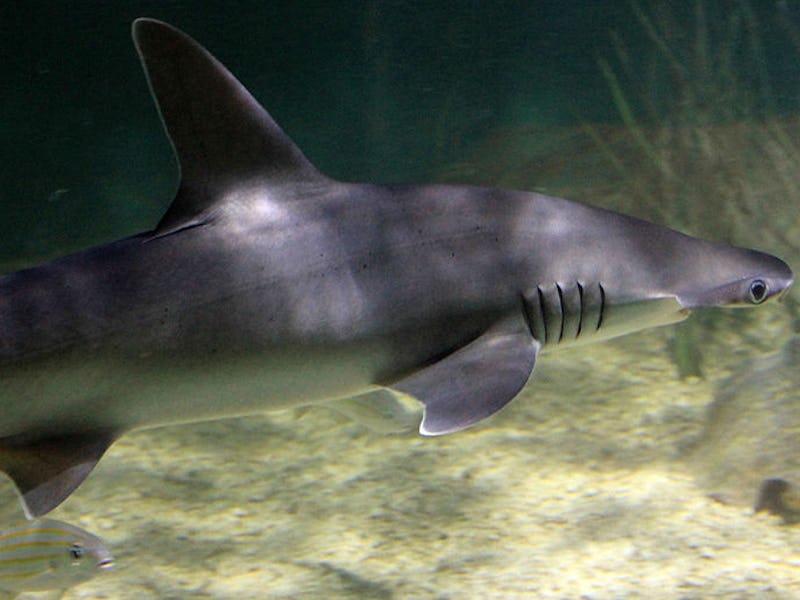Scientists Identify World's First Known Seagrass-Eating Shark
The bonnethead shark is an omnivore.

A shark’s diet is typically a cornucopia of meats: seals, rays, squids, and krill. The idea that “fish are friends, not food” may be charming in Finding Nemo but a bloody bucket of chum is more of a shark’s style. That is, unless the shark in question is a bonnethead shark, a small member of the hammerhead shark genus. According to a new study, this broad, smooth fish is the only shark species known to be an omnivore.
It is, however, unclear if the bonnethead shark means to be an omnivore. In the study, released Wednesday in the Proceedings of the Royal Society B, scientists determined that these sharks are able to digest the copious amounts of seagrass they consume. Previous studies established that up to 62 percent of the shark’s gut content mass could be seagrass, but it was unknown if the sharks were actually digesting the plant matter. Now, it’s clear that they are digesting it, but like a weekend warrior downing a garnished Bloody Mary, the ingested greens are likely a byproduct of wanting something else.
“It has mostly been assumed that they could not digest the seagrass and it was just incidental from scooping up blue crabs,” study co-author and Florida International University assistant professor Yannis Papastamatiou, Ph.D., tells Inverse. “We show that they can quite efficiently digest seagrass and get nutrients and energy from seagrass. I still believe they are getting it incidentally while chasing crabs, but they are getting some energy from the seagrass nonetheless.”
“I still believe they are getting it incidentally while chasing crabs, but they are getting some energy from the seagrass nonetheless.”
The bonnethead shark is technically known as the *Sphyrna tiburo*.
In this case, digestion is key: What an animal ingests and what they digest are not always the same thing. Just because you can swallow a small battery doesn’t mean your body is going to break it down into nice, nutritious molecules your body can use. The fact that previously dissected bonnetheads appeared to have degraded seagrass — not fresh seagrass — in their bellies was the first clue that their bodies were breaking the plants down and gaining nutrients.
In their study, Papastamatiou and his colleagues fed captive bonnethead sharks a diet that was 90 percent seagrass and 10 percent squid. When they subsequently analyzed the animal’s digestive system and the biochemistry of food particles that passed through them, they determined that the sharks were able to digest both fiber and soluble carbohydrates from the seagrass.
“The fact that this is the first known species of omnivorous sharks is very exciting!” Samantha Leigh, a Ph.D. candidate at the University of California, Irvine, and co-author on the study tells Inverse. “This means that we need to completely re-evaluate their role in crucial and fragile seagrass meadow ecosystems, as they likely play a different role in ecosystem dynamics than we had believed.”
Papastamatiou says that people typically focus on what a predator eats, but neglect to think about what happens after that food is consumed. Digestion, he reasons, “is a fascinating but often neglected process.” It’s what happens after an animal eats that allows for nutrients to spread, disperse, and prompt growth. Bonnethead sharks might be after crabs, shrimps, and mollusks, but their seagrass snacks give them a boost of necessary energy as well.